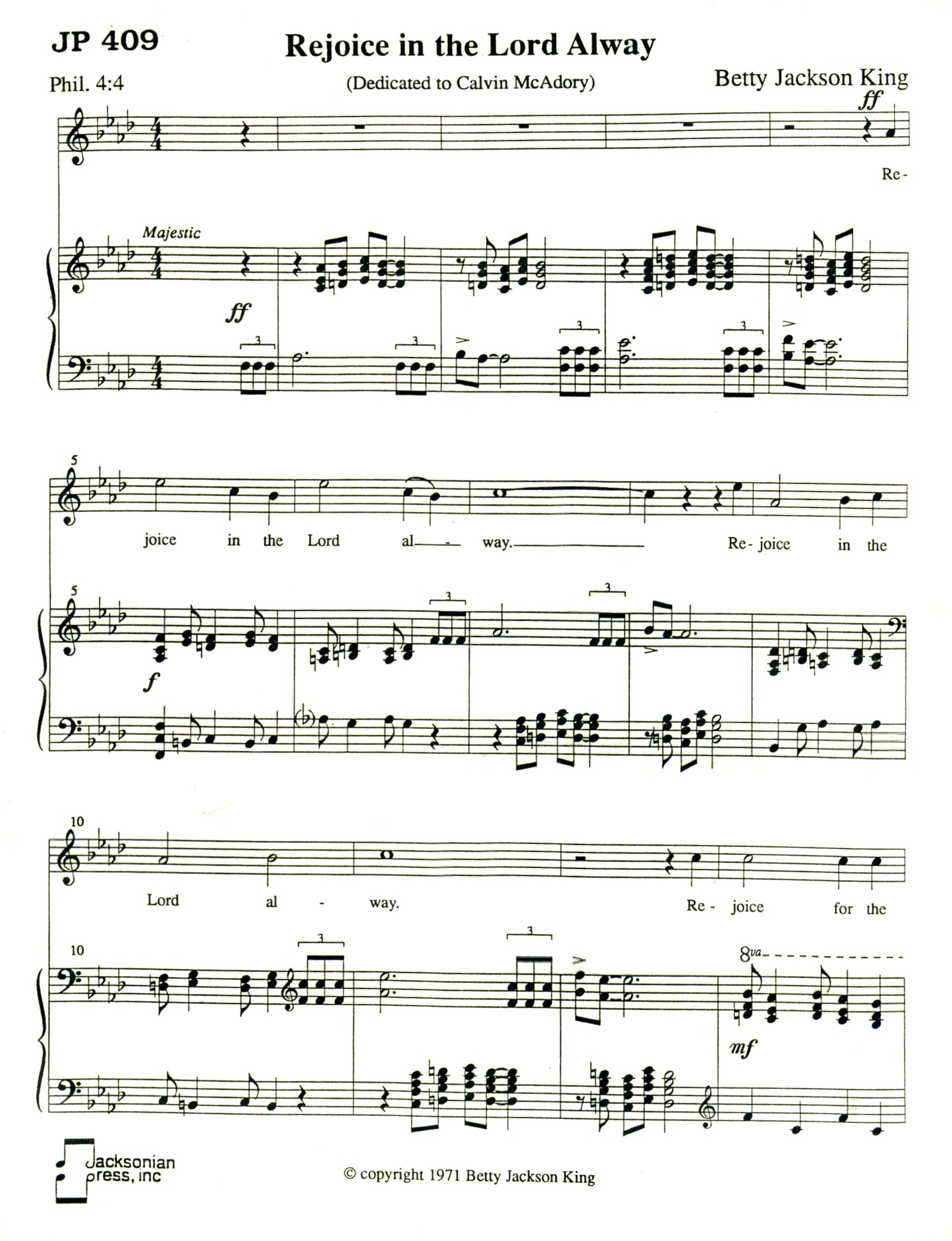

Video
Historical Narrative
Composed in 1971, Rejoice in the Lord Alway reflects Betty Jackson King’s profound ability to blend sacred text, radiant harmony, and structural precision. The work is dedicated to Calvin McAdory, a Chicago musician, vocalist, and music educator who was widely respected in both church and academic circles. McAdory was active in the Chicago Music Association and National Association of Negro Musicians (NANM, Inc.), the same organizations through which King advanced her leadership and artistry. Their shared musical vision—rooted in faith, scholarship, and community uplift—made this dedication especially meaningful.
King’s setting of the biblical exhortation from Philippians 4:4 (“Rejoice in the Lord alway; and again I say, Rejoice”) captures the balance between joy and reverence. Written during an era when she was composing both choral and solo repertoire of notable spiritual intensity, this song exemplifies her late-twentieth-century sacred idiom: formally concise yet harmonically rich, rhythmically propulsive, and emotionally resolute.
Musical Description
In Rejoice in the Lord Alway, King employs a majestic and declamatory style, befitting the scriptural text. The key of A-flat major lends a warm, resonant foundation, while the tempo marking Majestic invites the performer to approach the work as both proclamation and praise. The piano introduction, built on robust triadic figures and rhythmic triplets, establishes a noble rhythmic momentum before the vocal entry.
The vocal line begins with a simple, confident declaration of “Rejoice,” expanding upward in intervals that suggest spiritual uplift. King balances grandeur with clarity: each phrase follows the natural cadence of the scripture, ensuring intelligibility and emotional sincerity. Dynamic markings range from ff to pp, underscoring the contrast between exuberant joy (“Rejoice in the Lord alway”) and the more reflective repetitions (“The Lord is at hand”).
Harmonically, King infuses the work with mild chromaticism and secondary dominants, adding tension and release that mirror the believer’s spiritual journey. The Calmato section softens the tone, transitioning to a passage of introspection—“But in everything in prayer”—where the accompaniment moves into gentle broken chords and subtle voice-leading. This section highlights King’s gift for expressing theological nuance through harmonic shading and dynamic restraint.


